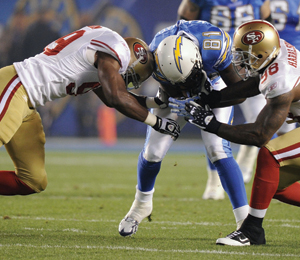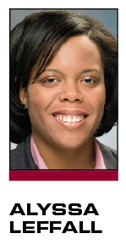Warrior mentality and team camaraderie have always been drivers for participation in football. However, the intensity of the game is taken up several notches when college scholarships and multimillion-dollar endorsements are at stake. Both the casual spectator and the most devoted fan appreciate the inevitable collisions between players, but what happens when high-speed, high-impact play goes terribly wrong?
Recent changes in the design of football helmets have focused on protecting the bigger, stronger and faster athletes of the 21st century, both professional and youth, from the risk of concussions during the course of play. In recent years, brain and spinal cord injuries occurring during football games have repeatedly made headlines. They have also left a number of injured participants to determine who, if anyone, is to blame. Groups and individuals across the country are concerned: Congress has conducted hearings on the subject, research groups have endeavored to develop new testing standards and rating systems for football helmets, and legislators have requested that the Federal Trade Commission and Consumer Product Safety Commission investigate alleged false and misleading advertising by helmet manufacturers concerning helmet protection against concussions. Most recently, and perhaps most importantly to helmet manufacturers, the Children’s Sports Athletic Equipment Safety Act was introduced in both the U.S. Senate and House in March by legislators concerned with protecting young athletes from the dangers of sports-related traumatic brain injuries. The proposed legislation has already been endorsed by well-known individuals and organizations, including the NFL Players Association.
What does it say?
 |
GETTY IMAGES
A rating system for adult football helmets was released in May, but no such system exists for youth. |
Specifically, the proposed legislation attempts to adopt testing standards for youth football helmets, a segment that is not taken into account in existing testing standards. It sets a deadline of nine months post-enactment for industry groups to develop appropriate guidelines. If that deadline is not met, the legislation requires that the CPSC step in to set mandatory criteria. The bill also requires that helmet labels visibly and legibly display when the helmet was manufactured and the date it was reconditioned, if applicable, along with a warning to consumers that the helmet’s ability to protect the wearer can decline over time. Sellers providing false or misleading claims with respect to the safety benefits of sporting goods would be subject to fines imposed by the FTC.
The bill gives both the FTC and state attorneys general enforcement rights. To date, the Senate bill has been referred to the Committee on Commerce, Science and Transportation. The House version has been referred to the Subcommittee on Commerce, Manufacturing and Trade.
Why is it necessary?
One repeated criticism of the football helmet industry is the failure of existing standards to adequately address the problem of concussion-related injuries, including those related to children 12 and younger, whose smaller head size and reduced neck strength create unique design issues. The National Operating Committee on Standards for Athletic Equipment is responsible for overseeing sports equipment safety standards. While the committee has stated that “more must be done to protect athletes,” passage of the legislation proposed by Sen. Tom Udall, D-N.M., and Rep. Bill Pascrell, D-N.J., will ensure that the development of youth standards is not a constant work in progress.
Several other organizations have endeavored to create rating systems for existing adult helmet technology. In 2009, the NFL began testing helmets in order to determine what progress had been made in the area of impact technology. Since the results were released in mid-2010, a number of critics have argued that questionable methodology and perceived bias with respect to certain manufacturers make the results spotty at best. In May 2011, Virginia Tech University released the results of a new rating system for adult football helmets based on new evaluation methodology. While this was a huge step forward in terms of evaluating adult helmets, standards and rating systems for youth helmets have remained largely untouched.
Who does it affect and how?
While participants and their parents may be breathing a collective sigh of relief over the development of helmet safety standards specifically for youth, the passage of such legislation would just be the beginning for helmet manufacturers, reconditioners and others covered under the bill. It is well-understood that wearing a football helmet cannot prevent a concussion; it can only lower the risk. As such, brain and spinal cord injuries occurring during play will never be entirely eliminated, and the injured will continue to look to manufacturers for answers, usually in the form of litigation.
Recent news stories concerning the legislation, as well as publication of various studies concerning the effects of concussions, will undoubtedly heighten the awareness of new statutory requirements and production standards. These factors will open the gates for increased litigation involving concussion-related injuries sustained during play.
Passage of the bill will also likely result in an increased number of FTC and other governmental inquiries into the marketing practices of manufacturers. As new studies are completed and additional data is revealed, any claims related to a helmet’s ability to lower the risk of concussion would be reviewed with intense scrutiny. It is unclear whether a private right of action will exist should the law be passed. However, the increased power of the FTC and state attorneys general to enforce the law will remain a cause for concern.
For coaches, school districts and athletic leagues, choosing sports equipment is often as much about economics as it is about safety. With the purchase of new or reconditioned helmets, there is a question of whether passage of the bill will result in an increased responsibility to monitor helmet labels for manufacture and reconditioning dates. Because the pending legislation does not limit the lifespan of helmets, the issue remains as to whether use of an older helmet will substantially affect the liability of the persons or the organization putting it in use. There is also a question about the applicability of the legislation where a resale of equipment exists.
The Children’s Sports Athletic Equipment Safety Act is legislation designed to protect youth as we encourage them to participate in sport and remain active in an increasingly sedentary society. The resulting legal requirements and ramifications of its passage on manufacturers, sports organizations and individuals should be observed and not taken lightly.
Alyssa Leffall (Alyssa.Leffall@wallerlaw.com) is an attorney with Waller Lansden Dortch & Davis.





